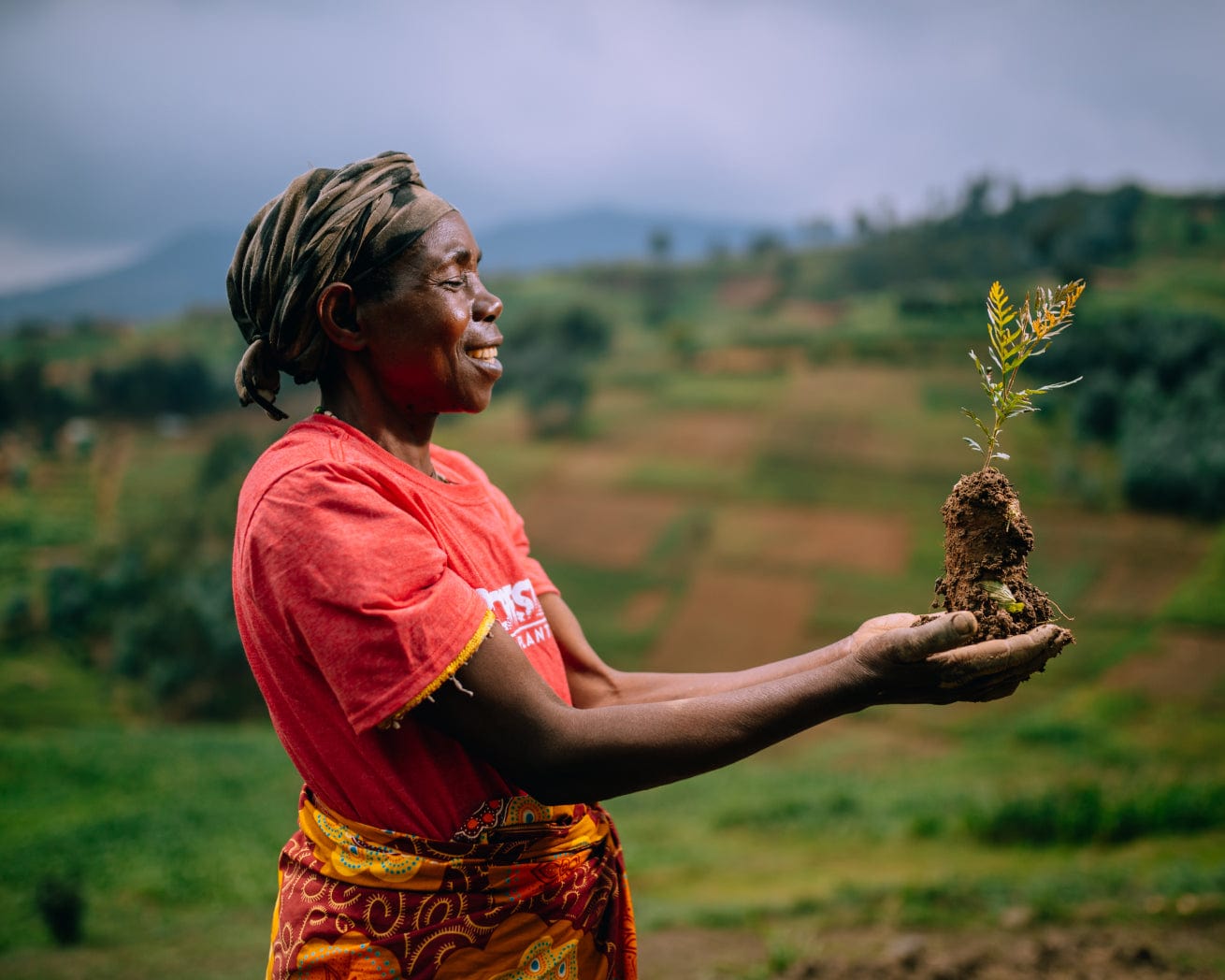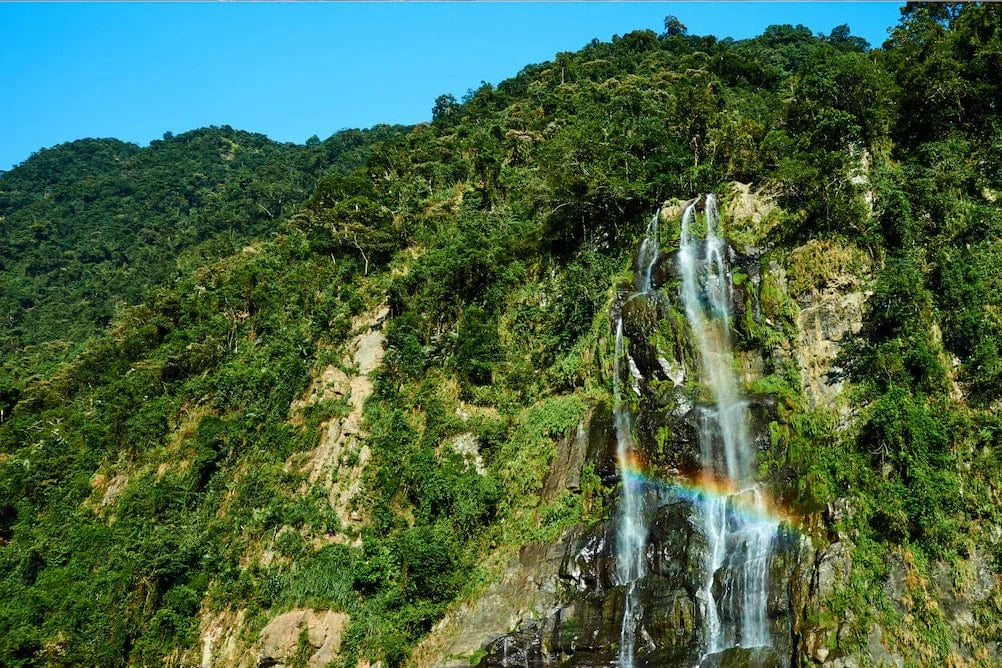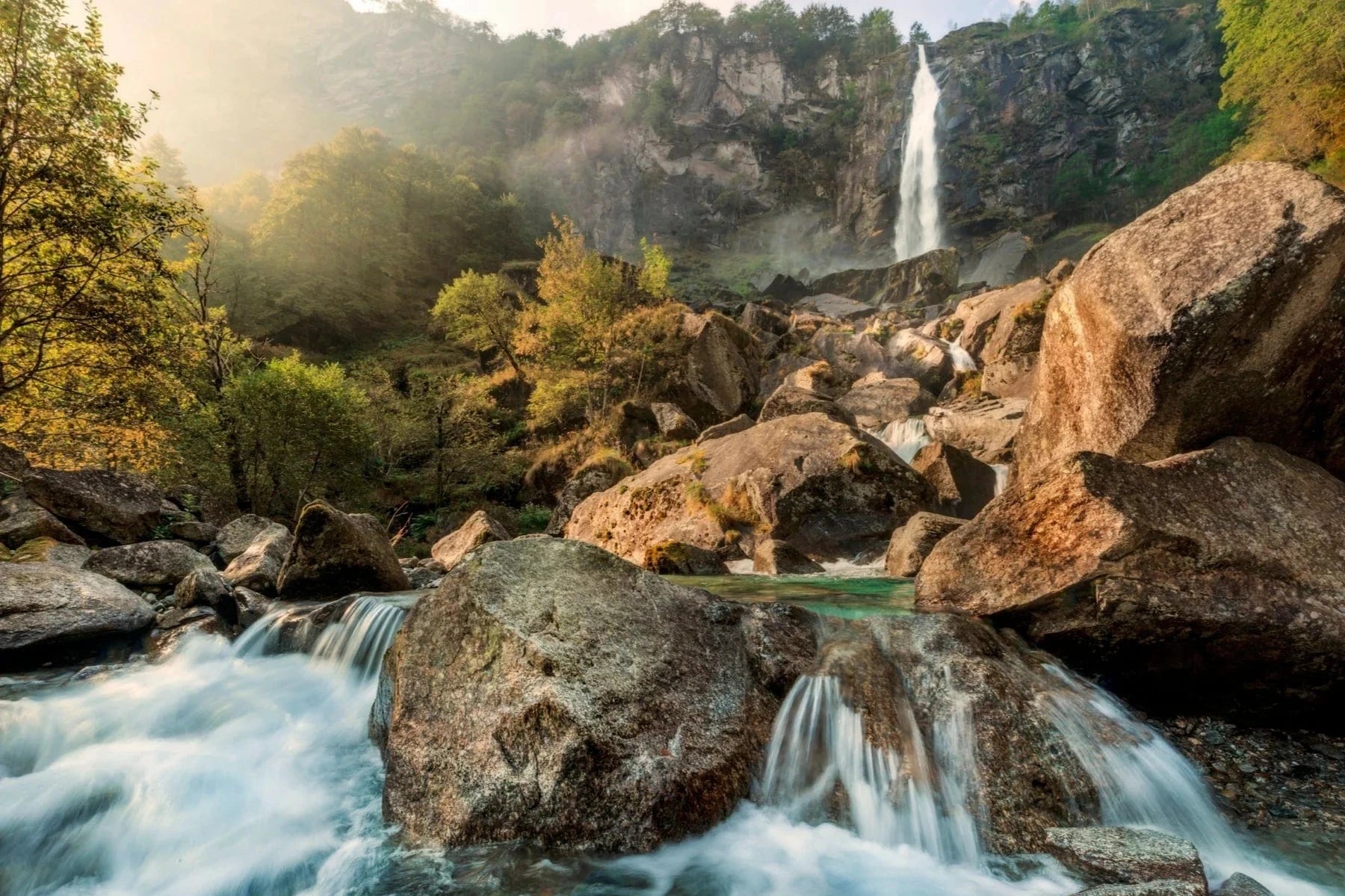
Get news, updates, & event Info delivered right to your inbox:
How Many Trees Are in The World?
For hundreds of years, humanity's progress has increasingly come at considerable cost to nature and the environment. This trajectory is largely responsible for the state of the world's forests today. The 2022 State of the World's Forests report from the Food and Agriculture Organization of the United Nations, is filled with the latest stats about deforestation and reforestation, tree cover and the benefits of trees. The report also identified key strategies we can implement globally to build as brighter, greener and more inclusive future.
The verdict? Trees and forests have clear potential to meet the need for equitable, cost-effective climate solutions that can be implemented rapidly at scale around the globe.
As an action-oriented organization, we really appreciate the clear framework they've laid out for pursuing these opportunities in a holistic way that balances addressing the climate crisis with creating economic benefits that change lives and improve livelihoods — particularly in rural communities, where a vast majority of the world's poor reside.
What Is the State of the World's Forests in 2022?
While we couldn't possibly list all of the stats found in the full 166-page report, here are a few (okay, maybe a little more than a few!) that feel particularly relevant:
- Forests cover 31% of Earth's land surface (approximately 4.06 billion ha), but that area is shrinking — we lost 420 million hectares our forests to deforestation between 1990-2020 alone.
- How many trees are cut down each year? The rate of deforestation is declining, but we still lost forests at a whopping 10 million hectares per year between 2015-2020.
- How many trees have been cut down? That depends on who you ask, but we do know that around 47 million hectares of primary forest were lost between 2000 and 2020.
- Planted forests cover approximately 294 million hectares, or 7% of the global forest area.
- This area has increased by almost 1% per year between 2015-2020, but that's down from a 1.4% increase per year between 2010-2015.
- The total area of non-forest land that's defined as woodland fell by nearly 1% between 2000-2020 but the area of land with tree cover (urban trees, tree orchards, palms and agroforestry landscapes) increased by more than 1/3 between 1990-2020.
- Agroforestry is a growing trend and at least 45 million hectares of land are currently dedicated to the practice.
- 80% of amphibian species, 75% of bird species and 68% of mammal species call forests home, and tropical forests contain about 60% of all vascular plant species.
- Over 700 million hectares of forest (or, just 18% of the global forest area) fall in legally established protected areas.
- Amongst the roles of forests, they contain 662 billion tonnes of carbon, which represents more than 1/2 of the global carbon stock held in soils and vegetation.
- Despite continued deforestation, forests absorbed more carbon than they emitted between 2011-2020, which is largely due to factors like reforestation and improved forest management.
- More than 1/2 of the world's GDP depends moderately-highly on ecosystem services, especially those that are provided by forests.
- 1/3 of the global population (around 2.6 billion people) relies on wood and other traditional fuels to fulfill household cooking needs.
- 3.5 billion-5.76 billion people utilize non-timber forest products for personal use or to support their livelihoods.
- 73% of global forests were publicly owned in 2015, and 22% were owned privately.
- As of 2017, local, tribal and indigenous communities were legally recognized as owning at least 447 million hectares of forest.
- More than 30% of the new diseases that have been reported since 1960 are attributed to land-use change, includingdeforestation.

For a Healthy Economy, We Need a Healthy Planet — But How Do We Get There?
At COP26, over 140 countries pledged to eliminate forest loss by 2030, and to support restoration and sustainable forestry, allocating 19 billion dollars towards supporting developing countries that are working towards these goals. This was a step in the right direction, but equally as important is uniting around a clear path forward, which will require seismic policy shifts and significant on-ground implementation. The 2022 State of The World's Forests report provides 3 clear pathways, backed up by rigorous research and data-based projections, to provide significant climate and environmental benefits while enhancing local sustainable development, capacity and resilience. They include:
- Halting deforestation and conserving existing forests, which provide benefits ranging from climate change mitigation to restored forest biodiversity habitat, improved human health and ecosystem health, and increased security of our food system in the long-term.
- Restoring degraded forests and empowering smallholder farmers to diversify their livelihoods, improve their long-term food security, heal degraded landscapes, and increase soil health and land productivity through sustainable agroforestry.
- Building green value chains that encourage a shift to sustainable forest use, which will help support sustainable economies and help meet future demand for forest materials and products

Stopping Deforestation and Conserving Existing Forests
In addition to protecting our incredible global biodiversity, halting deforestation and conserving existing forests could help prevent the emission of 3.6 +/- 2 giga tonnes of carbon dioxide equivalent (GtCO2e) per year from 2020-2050. This would constitute around 14% of the carbon emission reductions needed by 2030 to keep warming below the critical 1.5 °C point. In short: the benefits of halting deforestation far exceed the costs.
On the flip side, ecosystems that are at risk of deforestation an forest degradation contain at least 260 Gt of irrecoverable or difficult to recover carbon — particularly in peatlands, mangroves, old-growth forests and marshes. And unless significant action is taken, an estimated 289 million hectares of forests are projected to be deforested between 2016 and 2050 in the tropics alone — which would result in the emission of 169 GtCO2e. This, of course, would make it much more difficult to keep warming below 1.5 °C.

Restoring Degraded Forests and Empowering Sustainable Agroforestry
The data suggests that 1.5 billion hectares of degraded land would benefit from restoration — and that increasing tree cover could boost agricultural productivity on another 1 billion hectares of land. Achieving this via afforestation and reforestation is a cost effective way to remove an estimated 0.9–1.5 gigatonnes of carbon from the atmosphere per year between 2020-2050. In fact, according to 1 estimate, restoring 350 million hectares of degraded and deforested land by 2030 could actually deliver a net cost-benefit of 0.7-9 trillion dollars, or, $7-30 for every $1 invested.
With over 4 billion hectares of forest and farmlands being managed by family farmers, smallholders, forest communities and Indigenous Peoples — and with agricultural expansion being the primary driver of deforestation, these stakeholders will play a critical role in implementing the changes needed. To this end, forest and farm producers need more incentives to restore degraded forests and shift to a sustainable agroforestry model that protects our vital ecosystems while also providing sustainable livelihoods for the people and communities that directly rely on forests to survive and feed their families.
Research estimates that our global population swelling to 9.7 billion people by 2050, which means that competition for land will grow significantly in the future — with an estimated 35-56 % increase in food demand by mid-century. Coupled with the fact that agroforestry systems tend to be more resilient in the face of climate change and other environmental shocks, this is all the more reason to support sustainable agroforestry. Need more convincing? Depending on factors like the ecosystem and local conditions, agroforestry can support 50-80% of the biodiversity found in natural forests, increase food security and nutrition, and increase crop productivity. Seems like a no-brainer to us!

Building Green Value Chains that Encourage a Shift to Sustainable Forest Use
Driven primarily by construction and packaging, the demand for forest-based biomass is expected to continue to rise exponentially. And with global consumption of all of our planet's natural resources expected to more than double from 92 billion tonnes in 2017 to 190 billion tonnes in 2060, the plain truth is that the future we want to build must be built with renewable materials — and we need to create the green supply chains that will underpin our new sustainable economy.
That's a lot of demand for forest resources, especially when we're losing an estimated 10 million hectares of forested areas to deforestation each year. The only way to meet that growing demand, is to protect existing forests — and increase our global forest area by planting trees and implementing sustainable forest management. If done correctly, this can support a green recovery, green jobs and a transition away from non-renewable or emissions-intensive materials that wreak havoc on our climate and environment.

How Can We Protect Forests
For any of this to happen, current governmental policy needs to shift to diverting financial flows away from activities that harm forests, and incentivizing investment in restoration, conservation and sustainability. To support this, financing for all 3 pathways would need to at least triple (with more than 200 billion dollars per year going to forest establishment and management alone) by 2030 to meet the climate, biodiversity and land degradation neutrality targets that have been set by our world leaders.
Smallholders, local communities and Indigenous Peoples own or manage nearly 1/2 (or 4.35 billion hectares) of the world's forest and farm lands. Engaging these key stakeholders, who generate a gross annual income of approximately 1.29 trillion dollars, is critical if we want to sustainably scale up implementation on the ground. And the momentum is there! As of 2022, over 8.5 million producer organizations around the world help local groups participate in and support green recovery.
Companies that operate within forest-based value chains will be essential partners in co-developing circular economies that maximize the life span of raw materials and minimize the waste that products create from cradle to grave. Many of these companies are already opting to use forest products in place of materials that have a higher climate change footprint.
Further down the supply chain, local forest growers and processors can benefit from strengthening their ties with buyers and growing their capacity. Scaling up these actions doesn't come without financial risk, with smallholder investments taking on the biggest ones if supportive policies and institutions are not there for them to fall back on. Climate-change associated risks like increased vulnerability to wildfires, pests and drought, will also need to be managed. However, the risks associated with continuing our current global trajectory are larger, and will only compound for future generations. That's why it's so important to redesign our supply chains and support change at every link from start to finish.

In Summary, the FAO Report has Identified 4 key Starting Points to Help Drive Action:
- Directing funding for recovery towards long-term policies that are aimed at creating sustainable and green jobs, and developing more ways to mobilize investment from the private-sector.
- Empowering and incentivizing local actors to take a leading role, with a focus on those from underrepresented groups including women, youth and Indigenous Peoples.
- Raising awareness and engaging in dialogue around sustainable forest use as a means for achieving global environmental and economic goals.
- Strengthening the links between the 3 forest pathways and between agricultural, forestry, environmental and other policies that will affect their implementation.

Working Together Towards a Brighter Tomorrow
If you're feeling a bit overwhelmed by everything that needs to be done, you're not alone. But here at One Tree Planted, we believe the future is bright — and green!
Planting trees is just one piece within the larger mosaic of action needed, but from restoring old-growth forests to empowering rural smallholder farmers with life-changing sustainable agroforestry trees, we've seen the incredible things that we can accomplish when we're working together towards a shared cause. Join us as we work, together with our incredible business partners and reforestation partners, to build the future we want — one tree at a time. Plant trees today!
Get news, updates, & event Info delivered right to your inbox:
Related Posts
9 Sustainable New Years Resolutions
18/12/2025 by Meaghan Weeden
Inspirational Quotes About Trees
16/12/2025 by Meaghan Weeden
The 9 Oldest, Tallest, and Biggest Trees in the World
11/12/2025 by One Tree Planted
Popular On One Tree Planted
Inspirational Quotes About Trees
16/12/2025 by Meaghan Weeden
The 9 Oldest, Tallest, and Biggest Trees in the World
11/12/2025 by One Tree Planted
What Causes Deforestation?
10/07/2025 by Meaghan Weeden
Fundraising Disclosures

Be Part of the
Restoration Movement
The Grove is more than just a monthly giving program: it's a vibrant community of individuals who are dedicated to reforestation and environmental restoration on a global scale.
As a member of The Grove, you affirm your commitment to restoring forests, nurturing biodiversity, and fostering positive global change.



